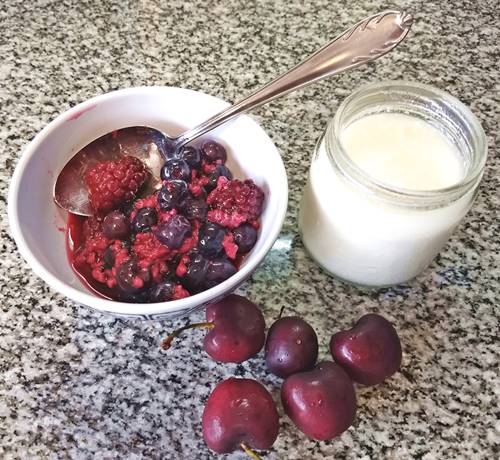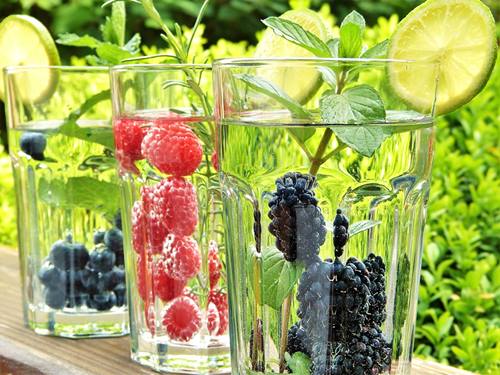Berries are great for your health
The Health Benefits of Berries
Fact Checked
×All the content published in our website is fact checked to validate its accuracy.
Visit our guidelines web page to learn more about our strict processes regarding how we review our content's sources: reliable and reputable journals, media websites, universities, colleges, organizations, and professionals.
Our articles are based on scientific evidence, and the references are included in its footnotes, which are clickable links to sound scientific papers.
First published: 04.Jan.2019
Antioxidant-rich berries
Berries are a natural food packed with phytochemicals called flavonoids that are very potent antioxidants.
These natural antioxidants neutralize the free radicals generated by stress, unhealthy lifestyle, and environmental factors.
You can easily incorporate berries into your diet and benefit from their anti-inflammatory and antioxidant properties every day. They are also a good source of fiber.
Read the scientific evidence and learn why berries are so good for you and what health benefits they provide.
References and Further Reading
(1) Pizzino G, Irrera N, Cucinotta M, et al. (2017). Oxidative Stress: Harms and Benefits for Human Health. Oxid Med Cell Longev. 2017;2017:8416763
(2) Kelley DS, Adkins Y, Laugero KD., (2018). A Review of the Health Benefits of Cherries. Nutrients. 10(3):368. Published 2018 Mar 17. doi:10.3390/nu10030368
(3) Huang W, Yan Z, Li D, Ma Y, Zhou J, Sui Z., (2018). Antioxidant and Anti-Inflammatory Effects of Blueberry Anthocyanins on High Glucose-Induced Human Retinal Capillary Endothelial Cells. Oxid Med Cell Longev. 2018;2018:1862462. Published 2018 Feb 22. doi:10.1155/2018/1862462
(4) Solverson PM, Rumpler WV, Leger JL, et al. (2018). Blackberry Feeding Increases Fat Oxidation and Improves Insulin Sensitivity in Overweight and Obese Males. Nutrients. 2018;10(8):1048. Published 2018 Aug 9. doi:10.3390/nu10081048
(5) Michalska A, Lysiak G, (2015). Bioactive Compounds of Blueberries: Post-Harvest Factors Influencing the Nutritional Value of Products. Int J Mol Sci. 2015;16(8):18642-63. Published 2015 Aug 10. doi:10.3390/ijms160818642
(6) Kalt W, Cassidy A, Howard LR, Krikorian R, Stull AJ, Tremblay F, Zamora-Ros R. (2020) Recent Research on the Health Benefits of Blueberries and Their Anthocyanins. Adv Nutr. 2020 Mar 1;11(2):224-236. doi: 10.1093/advances/nmz065. PMID: 31329250
(7) Ashwin Gopalan et al., (2012). The health benefits of blackcurrants. Issue 8, 2012 Food & Function
(8) Zhang H, Ma ZF, Luo X, Li X, (2018). Effects of Mulberry Fruit (Morus alba L.) Consumption on Health Outcomes: A Mini-Review. Antioxidants (Basel). 2018;7(5):69. Published 2018 May 21. doi:10.3390/antiox7050069
(9) Kristo, A. S., Klimis-Zacas, D., and Sikalidis, A. K. (2016). Protective Role of Dietary Berries in Cancer. Antioxidants (Basel, Switzerland), 5(4), 37. https://doi.org/10.3390/antiox5040037
(10) Virachnee Lohachoompol, George Srzednicki, and John Craske, (2004). The Change of Total Anthocyanins in Blueberries and Their Antioxidant Effect After Drying and Freezing. Journal of Biomedicine and Biotechnology, vol. 2004, no. 5, pp. 248-252
(11) Sesso HD, Rautiainen S, Park SJ, Kim E, Lee IM, Glynn RJ, Buring JE, Christen WG., (20204). Intake of Blueberries, Anthocyanins, and Risk of Eye Disease in Women. J Nutr. 2024 Apr;154(4):1404-1413. doi: 10.1016/j.tjnut.2024.02.028. Epub 2024 Mar 1. PMID: 38432561
(12) Zhang L, Muscat JE, Chinchilli VM, Kris-Etherton PM, Al-Shaar L, Richie JP., (2024). Consumption of Berries and Flavonoids in Relation to Mortality in NHANES, 1999-2014. J Nutr. 2024 Feb;154(2):734-743. doi: 10.1016/j.tjnut.2024.01.002. Epub 2024 Jan 5. PMID: 38184200
About this Article
The Health Benefits of Berries , A. Whittall
©2024 Fit-and-Well.com. First Published: 04.Jan.2019. Updated 11.Nov.2024. Update scheduled for 15.Nov.2027. https://www.fit-and-well.com/diet-food/berries-health-benefits.html
Tags: free radicals, eyes, berries, antioxidants, anthocyanins, flavonoids, cancer






